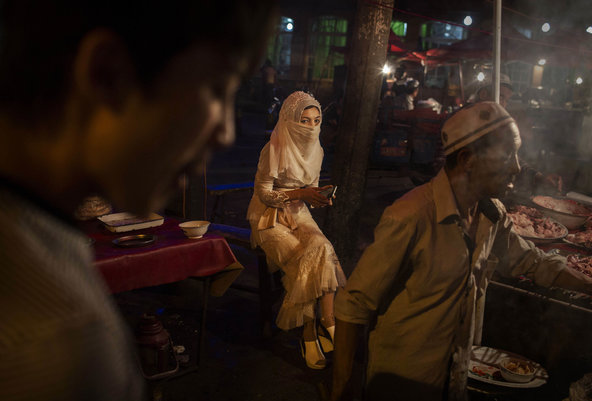SHUTING LI WRITES – Who are the Uighurs and why have they become such an issue in East Asia? Here is a simplified analysis – absent of ideology, slant and misunderstanding – that you won’t normally find in the mainstream news media.
First of all, we must note that conflict in the region has been abundant in Xinjiang since the 2009 Urumqi Riots. There have been countless bombing attacks and mass knifings in train stations. These not only occurred in Xinjiang, but also in other major cities in China such as Beijing and Kunming.
As China’s largest administrative region, Xinjiang is home to 10 million ethnic Turks, more commonly known as Uighurs. Many Uighurs are practicing Muslims. The Uighur identity of sharing a similar cultural and ethnic background with central Asian nations often leads to issues with assimilation and therefore creates endless problems with maintaining a unified China.
Currently, Uighurs consider themselves to be separate from those who the Chinese call “Han” (the majority of Chinese people). However, China is now attempting to group all of the 56 existing ethnicities in China into a unified group called “zhonghuaminzu,” the ultimate Chinese race. In 2012, Uighurs made up about 46% of the total population in the province of Xinjiang, while the Han accounted for 39%. Back in 1949, when the PRC was founded, only 7% were Han and the other 76% were Uighurs.
However, due to the lack of reaching a mutual understanding of each other’s cultures, China often refers to Muslim Uighurs as separatists and terrorists. Originally occupied by the Uighurs, Xinjiang eventually became home to the Han as well. The Uighurs then began to feel as if they were a minority in their own homeland and feared that Beijing was attempting to dilute their culture and religion through mass migration.
Since 1949, the highest leader of Xinjiang has been a Han official, appointed directly by Beijing. They speak for China as a whole instead of considering the historical beliefs of the Uighurs. Xinjiang shares the border with eight inland countries in Central Asia: Mongolia, Russia Kazakhstan, Kyrgyzstan, Tajikistan, Afghanistan, Pakistan and India. In Chinese, Xinjiang means “New Frontier” or “New Dominion.” The name reflects the fact that it has generated rich resources for China. However, Xinjiang’s economic boom has benefited the migrating Han more than the Uighurs. Hans take Uighurs’ job opportunities, and low levels of education and inability to speak Mandarin keep the Uighurs in poverty.
Due to ongoing Han resentment of Uighurs, they are pressured to find new ways to survive. Many Uighurs flee abroad, believing that they will be able to worship more freely. For example, Mehmet, one of thousands of Uighurs, recently fled to Turkey not through the use of a Chinese passport but by human smuggling. He traveled through Tajikistan, Afghanistan, Pakistan, India, Bangladesh, Myanmar, Thailand, and Malaysia. It was there that he then obtained a fake Turkish travel document. This popular Southeast Asian Underground Railway has higher success rates than the traditional way of fleeing the country, which involves crossing illegally through Central Asia. Turkey has granted Chinese Uighurs sanctuary as part of a policy to welcome Eurasia’s ethnic Turks. Turkey claims that it has been helping the Uighurs since the 1950s. Sharing his opinion of China’s rule of Xinjiang, Mehmet stated that “China only gives us two options, either we must be exactly like them, or we will be destroyed.”
This mistrust has continued with the banning of Islamic Veils in China, which began February, 1st, 2015 (also the 3rd Annual World Hijab Day). As part of the Chinese Communist Party’s attempt to suppress “Islamic Extremism,” they have banned individuals from wearing veils in public, and violators can be fined up to $800 dollars. Traditional Muslim Hijabs are considered “abnormal” in the dominant Han culture. China launched “Project Beauty” in 2011, which is a five-year, $8 million dollar campaign created to persuade Uighur women to “let their beautiful hair flow and show their beautiful faces.”
However, veils for Uighur women are a “sign of membership of a modern, transnational Muslim community, while others see it as a symbol of Uighur identity.” Uighur women are expected to show their hair only to their husbands. Banning veils is like asking them to go naked and run through the streets. The lack of understanding of Muslim culture and of Uighurs will only worsen the conflicts between the Uighurs and the Hans. Perhaps Uighurs are being pushed to extremism by inhumane religious restrictions and China’s use of lethal police force against those who are different.

